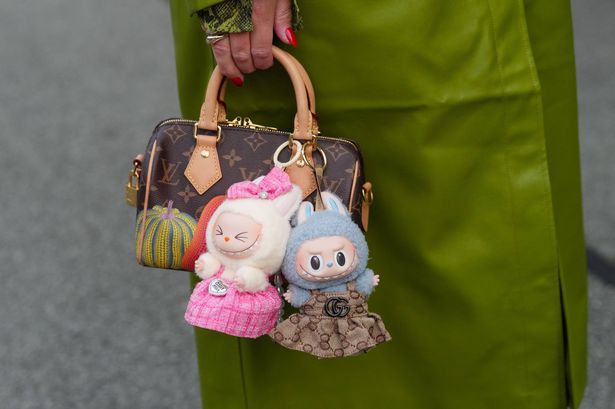It’s been impossible to escape 2025’s Labubu craze. However, as reports suggest that their popularity is beginning to wane, their potential environmental impact remains a concern
Whether you have 10 of them clinking on your key chain or you found their little gremlin faces creepy, it’s impossible to deny: Labubus dominated this summer. These shark-toothed toys flooded social media screens, led to a temporary sales pause in the UK due to safety and were in so much demand that one even fetched £110,000 at an auction.
However, like any trending item, Labubus have likely seen their heyday. In September, the toy company’s stock price fell by 9%, while toys on the resale market are now going for more modest prices than before based on a Handelsblatt report. Indeed, the reign of the mischievous toy may be coming to an end.
But that doesn’t mean the toys will disappear. According to Science Direct, an entire 80% of toys end up in landfills – a fate which could await the once-viral Labubus. Given the sheer volume of toys circulating, this means we may have a massive waste problem on our hands.
READ MORE: Lorde joins over 1000 artists in ‘No Music for Genocide’ boycott against IsraelREAD MORE: Inside Gen Z’s new ‘soft clubbing’ trend where they rave in coffee shops
POP MART, the Chinese company behind the Labubu, hasn’t divulged exactly how many of the toys were sold. However, the company made over £1.4 billion in sales in the first half of 2025 alone, which includes the famous doll, as reported by Sky News. So, what happens when even a portion of these toys end up in a landfill?
First, you need to look at what they’re made of. The dolls are predominantly made of plastics derived from fossil fuels like polyvinyl chloride (PVC) and polyester fabric. Not only is the manufacturing process for these materials highly polluting, the materials themselves pose a threat to the environment.
PVC poses a particular problem, One Stop ESG warns. According to the online sustainability marketplace: “The production and disposal of PVC releases toxic chemicals such as dioxins, known to have severe ecological and health implications.”
For more stories like this subscribe to our weekly newsletter, The Weekly Gulp, for a curated roundup of trending stories, poignant interviews, and viral lifestyle picks from The Mirror’s Audience U35 team delivered straight to your inbox.
Plus, the nature of how they were sold also has a negative environmental impact. Labubus were sold in blind boxes, which meant that each doll was individually packaged in plastic and cardboard – increasing the amount of waste produced.
According to One Stop ESG, this waste is generally non-recyclable due to mixed materials and coatings. Worse still, plastic wrappers and foils used for these products can remain in the environment for hundreds of years, only contributing to the global issue of plastic pollution and microplastics.
Of course, Labubus aren’t the first trinket to see quick-lived virality turn into long-lasting environmental damage. In 2023, Sonny Angels were the dominant blindbox trend, with the hashtag boasting almost half a million posts on TikTok. You don’t hear about them quite as often now, yet the PVC used to make them will likely be around for hundreds of years.
Meanwhile, a 2024 study found that 62% of Britons have thrown away homeware that could have been otherwise reused as part of a ‘fast homeware’ trend.
The Mirror has reached out to POP MART for comment.
Help us improve our content by completing the survey below. We’d love to hear from you!
Source: Mirror

Leave a Reply